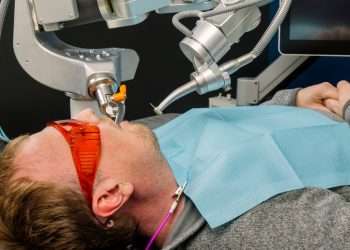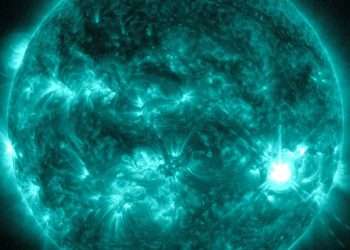NASA experts are scrambling to wake up the Hubble Space Telescope after a glitch saw it slip into hibernation.
The malfunctioning means the high-tech instrument has temporarily stopped observing the cosmos.

Nasa said the Hubble Space Telescope slipped into a hibernating state[/caption]

The brilliant, blue glow of young stars traces the spiral arms of galaxy NGC 5584 in this Hubble Space Telescope image[/caption]


The Hubble Telescope discovered the brightest quasar ever seen in the early universe which has the brightness of about 600 trillion suns[/caption]
Nasa told a press conference that the telescope – equipped with powerful cameras – slipped into a hibernating state more than a week ago.
This is due to a defective gyroscope.
The instrument has six gyroscopes – part of its pointing system – but uses only three at a time.
However, three gyroscopes no longer function.
And, one of its three remaining gyroscopes has now malfunctioned.
SPINNING
“The telescope automatically entered safe mode when one of its three gyroscopes gave faulty telemetry readings,” said Nasa.
Flight controllers are currently trying to work out how to fix the glitch, officials added.
“Hubble’s gyros… are part of the system that determines and controls precisely the direction the telescope is pointed.
“Hubble’s instruments are stable, and the telescope is in good health.”
The telescope received six new gyroscopes during the astronauts’ final visit in 2009.
“The devices’ spinning wheels keep the telescope stable and looking the right way by tracking Hubble’s rotation and position in space,” explained The Associated Press.
However, Nasa said the 34-year-old observatory could keep making discoveries with just one or two good gyroscopes.
GYROS FAIL
Nasa has previously explained that Hubble gyros can malfunction over time.
This is “usually because of wear and tear of thin (less than the width of a human hair), metal wires, called flex leads that carry power in, and data out, of the mechanism,” it said.
“Hubble has had eight out of 22 gyros fail due to a corroded flex lead.”
There was a similar problem in 1999 when the fourth of six gyros conked out.
“The spacecraft sat in safe mode waiting for a space shuttle servicing mission that installed six new gyros one month later,” said Nasa.
Each of Hubble’s six gyros holds a wheel spinning at a constant 19,200 revolutions per minute.
Hubble’s pointing and control system is equivalent to keeping a laser shining on a dime over 200 miles away.
Nasa
Hubble Space Telescope has one of the most accurate pointing systems of any spacecraft.
It captures light from distant objects billions of light-years away (one light-year is 5.88 trillion miles).
These appear as specks a few pixels tall in the camera.
“Such observations require pinpoint accuracy and a fixed, steady gaze as Hubble speeds some 17,000 miles per hour (27,000 km/hour) around Earth,” said Nasa.
“Hubble’s pointing and control system is equivalent to keeping a laser shining on a dime over 200 miles (320 km) away for however long Hubble takes a picture – up to 24 hours.
“Any movement beyond that level of accuracy would make the image blurry or throw Hubble off the target.”
KEEP WORKING
Despite the current malfunctioning problem, Nasa said it expected the Hubble would continue making discoveries throughout this decade.
It could also keep making observations into the next decade, working with other observatories, such as the agency’s James Webb Space Telescope.
Nasa officials said that more information is expected to be released this week.
What is the Hubble Space Telescope?

Here's what you need to know…
- The Hubble Space Telescope is a telescope that captures images while in space
- It was launched into a low-Earth orbit in 1990 and is still fully operational
- The advantage of Hubble is that it takes photos from outside of Earth’s atmosphere
- This means distortion from the atmosphere is removed, allowing for more accurate image capture
- Nasa’s Hubble has captured some of most detailed images of space ever recorded
- The Hubble telescope was also able to accurately determine the rate at which the universe was expanding
- Hubble is also the only telescope that was designed to be serviced by astronauts in space
- Five different missions have been launched to repair, upgrade or replace parts of the Hubble telescope
- It’s believed that the Hubble telescope could continue working until 2040
- But its successor – the James Webb Space Telescope – already launched in December 2021
The Space Telescope Science Institute in Baltimore, Maryland, oversees Hubble’s science operations.
Hubble has taken some of the sharpest and deepest images of our Universe thanks to its position high above the atmosphere, said the Royal Museums Greenwich in London.
Among its many contributions to science are the discovery of Pluto’s two moons, Nix and Hydra
It also discovered that nearly every major galaxy is anchored by a black hole at the center.
Other fascinating images captured by the telescope were those of spiral galaxy NGC 4731 which lies in the constellation Virgo and is located 43 million light-years from Earth.
Revealed on May 31, incredible pictures illustrated the galaxy’s billowing clouds of gas, dark dust bands, bright pink star-forming regions, and a long, glowing bar with trailing arms.

































